How to Introduce Your Cat to a New Kitten
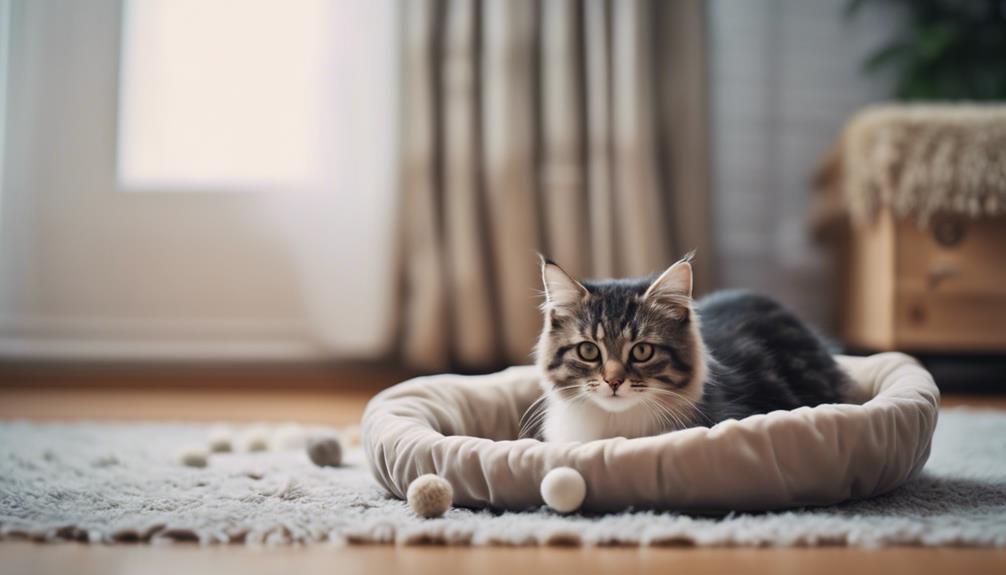
Introducing a new kitten to your cat can be a smooth process if done strategically. The first step is to keep the new kitten in a separate room for a few days to allow both animals to get used to each other's scent under the door.
Next, you can start swapping bedding or toys between the two animals to further familiarize them with each other's scent. Gradually, you can allow supervised interactions between the cat and the kitten, ensuring that both animals feel safe and comfortable during the introductions.
It's essential to monitor their interactions closely and be patient throughout the process. With time, your cat and the new kitten can form a harmonious bond and become lifelong companions.
Understanding Cat Behavior
When introducing your cat to a new kitten, it's crucial to understand cat behavior in order to facilitate a smooth and successful transition. Feline body language plays a significant role in communication between cats. Cats use their body posture, facial expressions, and vocalizations to convey their feelings and intentions.
For instance, a cat with flattened ears and dilated pupils may be feeling fearful or aggressive, while a cat with a relaxed body posture and gently twitching tail is likely feeling content.
Socialization techniques are essential when introducing a new kitten to your existing cat. Gradual introductions, where the cats can see and smell each other without direct physical contact, can help reduce tension and anxiety. Providing separate spaces for each cat initially and gradually allowing supervised interactions can also aid in the socialization process. Positive reinforcement, such as treats or playtime, can help create positive associations between the cats.
Understanding feline body language and implementing effective socialization techniques are key aspects of successfully introducing your cat to a new kitten. By being attentive to their behaviors and needs, you can help foster a harmonious relationship between your feline companions.
Preparing Your Home Environment
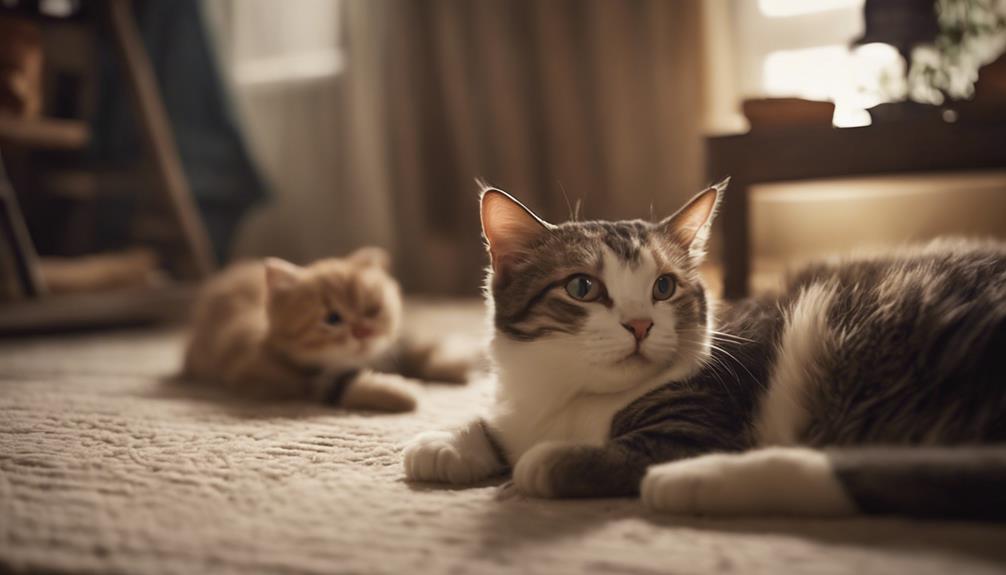
When bringing a new kitten into the home, creating safe spaces for them to explore and feel secure is crucial.
Familiar scents, such as bedding or toys, can help ease the transition for both the resident cat and the new kitten.
Ensuring a comfortable and welcoming environment sets the stage for a successful introduction between the feline companions.
Safe Spaces for Kitten
Creating a designated safe space for the new kitten in your home is essential for their comfort and well-being during the transition period. This area should provide a sense of security and allow the kitten to adapt gradually to its new surroundings. Consider including items like a cozy bed, food and water dishes, a litter box, and some toys to keep them entertained. Below is a table illustrating key elements to include in the kitten's safe space:
| Safe Space Essentials |
|---|
| Cozy Bed |
| Food and Water Dishes |
| Litter Box |
| Toys for Playful Interactions |
| Blanket or Towel with Familiar Scents |
Familiar Scents Help
To help your new kitten feel more at ease in its safe space, incorporating familiar scents from your home environment can provide comfort and reassurance as it adjusts to its surroundings.
Scent familiarity plays a crucial role in helping the kitten feel secure and relaxed in its new environment. You can achieve this by using bedding or blankets with familiar scents, such as those of its mother or siblings, to create a sense of belonging.
Additionally, using bonding techniques like gentle petting and interactive playtime can further strengthen the bond between you and the kitten.
Scent Exchange and Familiarization
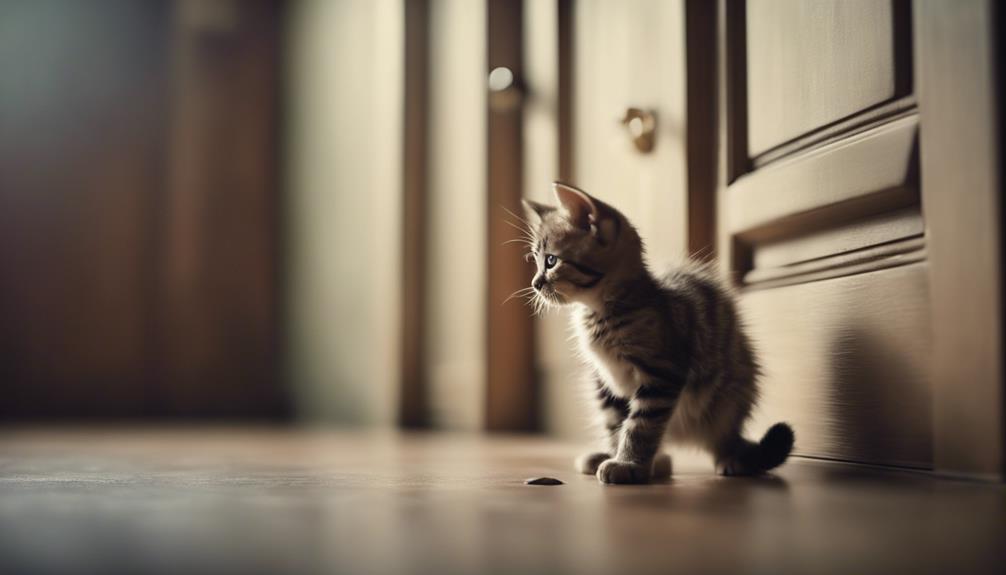
Introducing your cat to a new kitten involves gradually exchanging scents and allowing them to become familiar with each other's presence. Scent recognition plays a crucial role in the bonding process between your cat and the new kitten. To facilitate a smooth introduction, start by swapping bedding or toys between the two animals. This helps them get accustomed to each other's scent in a non-threatening way.
Another effective method is to gently rub a cloth on one pet and then place it near the other, allowing them to investigate at their own pace. This scent exchange helps create a sense of familiarity and comfort between the cat and the kitten. Additionally, using pheromone diffusers can help reduce stress and anxiety during this transition period.
Controlled Visual Introduction
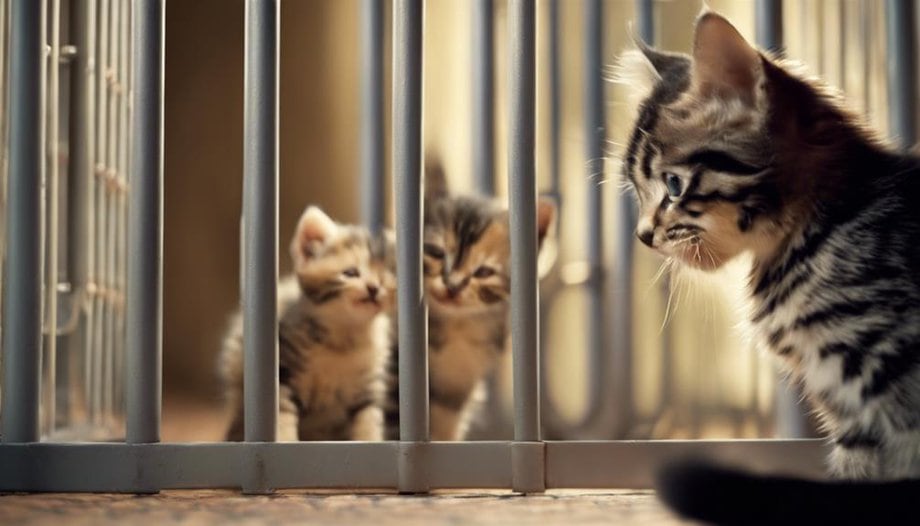
When introducing a new kitten to your cat, controlled visual introduction is crucial. This involves allowing the two animals to see each other from a safe distance. By observing their behaviors and cues during this visual exchange, you can gauge their reactions and readiness for further interaction.
This step sets the foundation for a gradual and successful introduction between your cat and the new kitten.
Visual Space Exchange
At the outset of acclimating your cat to a new kitten, consider implementing a controlled visual introduction technique known as Visual Space Exchange. This method involves swapping the animals' sleeping blankets or bedding between their spaces, allowing them to become familiar with each other's scent and presence without direct physical contact.
By exchanging their territories in this way, cats can start to recognize each other's body language and scent, which can help in reducing initial tension and fear. This technique is particularly useful in helping both animals adjust to the idea of sharing space and understanding each other's presence before progressing to face-to-face interactions.
Visual Space Exchange can be a valuable tool in creating a harmonious environment for your cat and new kitten.
Behavior Observation Cues
Regularly observing behavior cues is essential during the controlled visual introduction of a new kitten to your cat. This step helps ensure a smooth transition and positive interaction between the two pets. Here are some key cues to pay attention to:
- Body Language: Watch for signs of tension, such as raised fur, stiff posture, or a swishing tail, which may indicate discomfort or aggression.
- Vocal Cues: Listen for hissing, growling, or other vocalizations that could signal fear or territorial behavior.
- Eye Contact: Note how the cat and kitten react to each other's gaze, as prolonged eye contact can sometimes be a sign of challenge.
- Physical Interactions: Observe how they approach each other – whether it's with curiosity, caution, or hostility.
Supervised Interaction Sessions
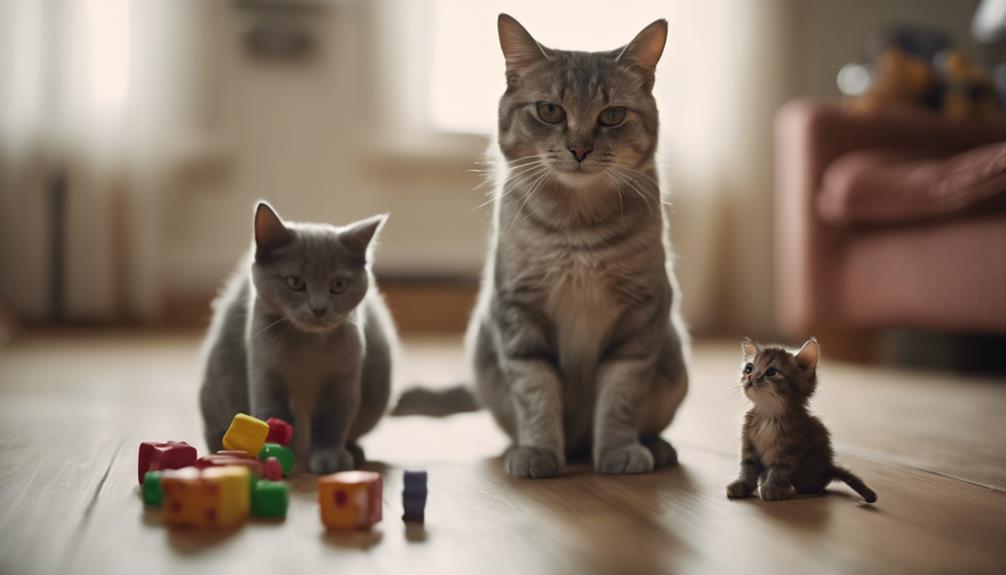
During supervised interaction sessions, ensure a calm environment for the cat and new kitten to gradually get acquainted. Playtime bonding is a crucial component of these sessions, allowing the cat and kitten to engage in activities together under supervision. Supervised playtime helps them build positive associations and reduces the chances of conflicts.
Start by setting up a safe space where both pets can interact without feeling overwhelmed. Use interactive toys to engage them in joint play sessions, encouraging positive interactions. Be attentive to their body language and behavior during these sessions, intervening if signs of aggression or discomfort arise. Keep the sessions short initially, gradually increasing the duration as the cat and kitten become more comfortable with each other.
Remember to provide treats and praise for good behavior to reinforce positive interactions. By closely supervising their interactions and creating a supportive environment, you can help foster a harmonious relationship between your cat and new kitten.
Providing Separate Safe Spaces
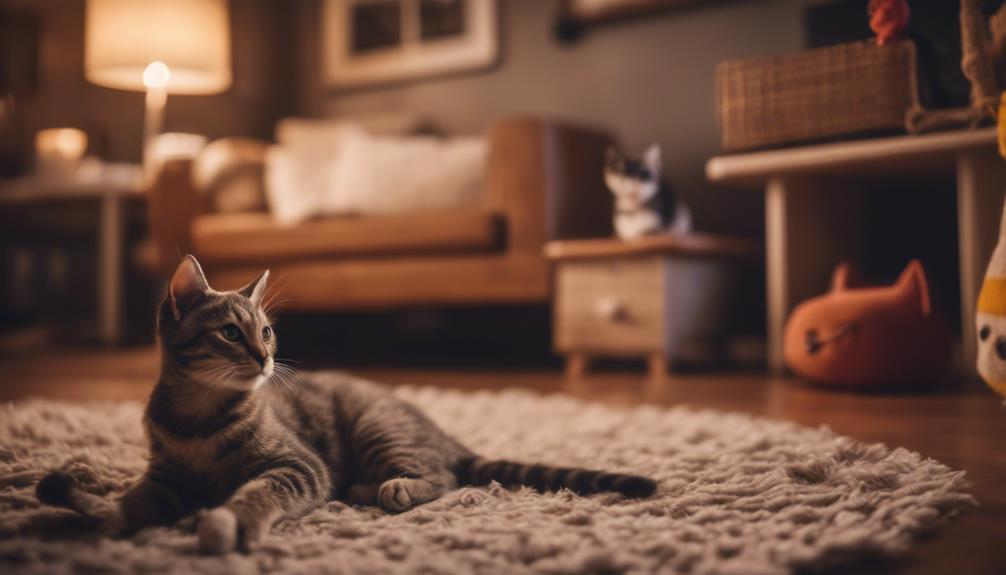
To ensure a smooth transition for your cat and new kitten, it's essential to provide each of them with separate safe spaces within your home. This helps them feel secure and gradually adjust to each other's presence. Here are some key points to consider:
- Establish Playtime Boundaries: Allow both pets to have their own designated play areas to prevent any potential conflicts during play sessions. This ensures that each pet feels safe and can engage in play without feeling threatened.
- Create Quiet Retreats: Cats, in particular, appreciate quiet and cozy spaces where they can retreat to when they need some time alone. Providing separate hiding spots or cozy beds can help each pet feel secure and have a place to relax away from the other.
- Use Vertical Space: Cats love to climb and perch up high. Utilize cat trees or shelves to create vertical territory where each pet can have their own space and observe the environment from a safe distance.
- Ensure Individual Resources: Make sure that each pet has access to their own food, water bowls, litter boxes, and toys. This helps prevent resource guarding and minimizes potential conflicts over shared resources.
Gradual Integration and Monitoring
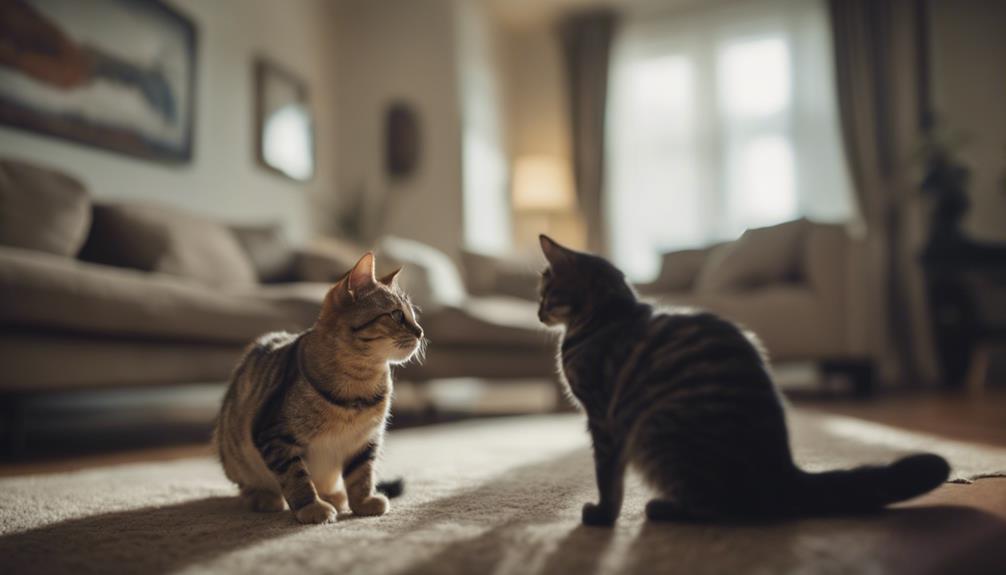
As you introduce your cat to a new kitten, it is crucial to focus on gradual integration and continuous monitoring to ensure a successful and harmonious relationship between the two pets. Slow introduction and monitoring are key to preventing conflicts and allowing the animals to adapt at their own pace. Controlled integration and supervision help create a safe environment for both the cat and the kitten, fostering positive interactions and reducing the likelihood of aggressive behavior. By taking this gradual approach, you can help build trust between your pets and establish a strong foundation for a lasting bond.
| Slow Introduction | Controlled Integration |
|---|---|
| Allow pets to sniff each other under a door | Keep initial meetings short and positive |
| Swap bedding between the cat and kitten | Use treats to reward calm behavior |
| Rotate their living spaces to mix scents | Provide separate feeding areas initially |
Frequently Asked Questions
How Can I Tell if My Cat Is Feeling Stressed or Overwhelmed During the Introduction Process?
If a cat feels stressed or overwhelmed during introductions, stress indicators may include behavioral changes. Watch for body language shifts and vocal cues – they speak volumes. Understanding these signs helps in easing the transition.
What Should I Do if My Cat Shows Signs of Aggression Towards the New Kitten?
If a cat displays aggression toward a new kitten, behavior modification and training techniques can help. Seeking professional advice or consulting a behaviorist is crucial for tailored strategies. It's essential to address the issue promptly and effectively.
Is It Normal for My Cat to Hiss or Growl at the New Kitten During the Introduction Process?
It is common for cats to hiss or growl at a new kitten during introductions. Body language is key; if they engage in defensive stances, provide supervision. Patience and gradual introductions help foster a positive relationship between the two.
How Long Does It Typically Take for Cats to Adjust to a New Kitten in the Household?
Adjusting to a new kitten can vary; typically, cats take 1-4 weeks to bond. Observing behavior cues and body language aids in understanding their progress. Patience, positive reinforcement, and gradual introductions can foster a harmonious household.
Are There Any Specific Toys or Activities That Can Help Facilitate Bonding Between My Cat and the New Kitten?
Interactive play and bonding activities are key in fostering a strong relationship between a cat and a new kitten. Enrichment toys and training exercises can help them bond through shared experiences, creating a harmonious environment for both pets.











